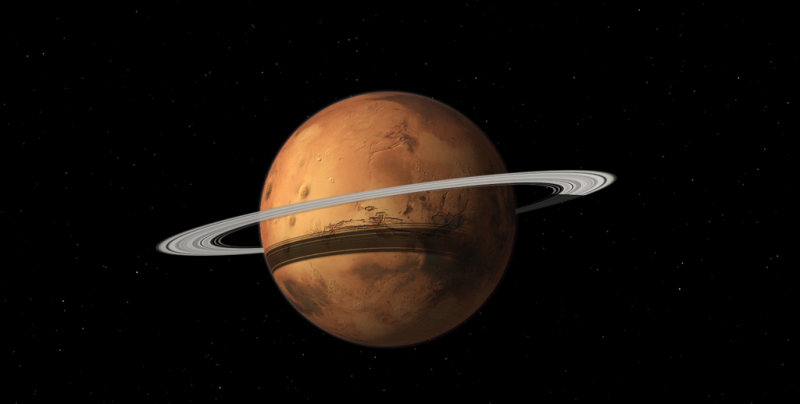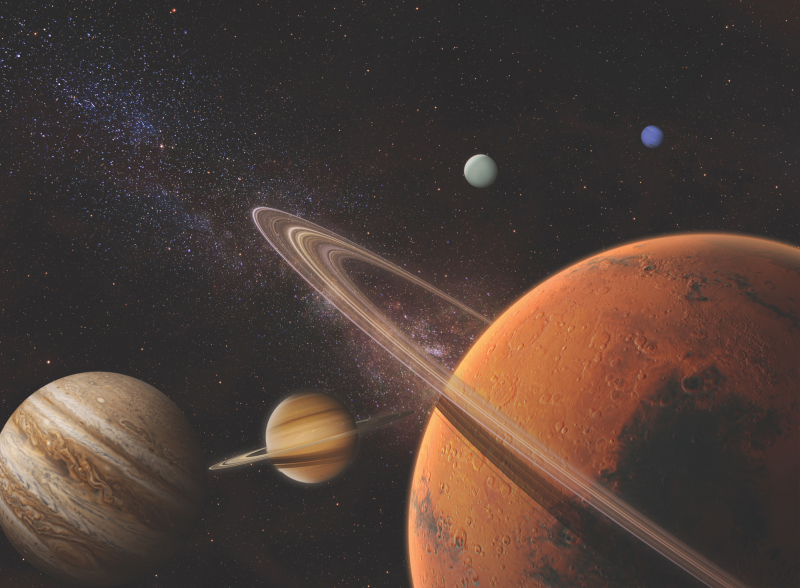Mars Should Get Its Own Ring in the Future

Because of their distinctive circling rings, Saturn and Uranus are two of the Solar System's more unusual planets. But it turns out that Mars could receive its own ring in a few tens of millions of years, not to be outdone.
Astronomers predict that gravitational forces will eventually split apart Phobos, Mars' largest and most mysterious moon. As a result, a debris field will develop, which will eventually settle into a stable orbit and create a rocky ring around Mars. Phobos is the closest moon to its planet of any in the solar system, orbiting just 3,700 miles (6,000 kilometers) above Mars' surface. Phobos is being drawn in by Mars' gravity by around 6.6 feet (2 meters) per hundred years. In 30 to 50 million years, the moon will be torn apart, according to NASA.
But the ring won't last forever. It is predicted to persist for about 100 million years before breaking up and dropping to the surface of Mars. The early warning indications of this moon's impending demise are still visible today in a number of significant fissures on its surface.
The day that Mars should get it's our ring: in a few tens of millions of years















